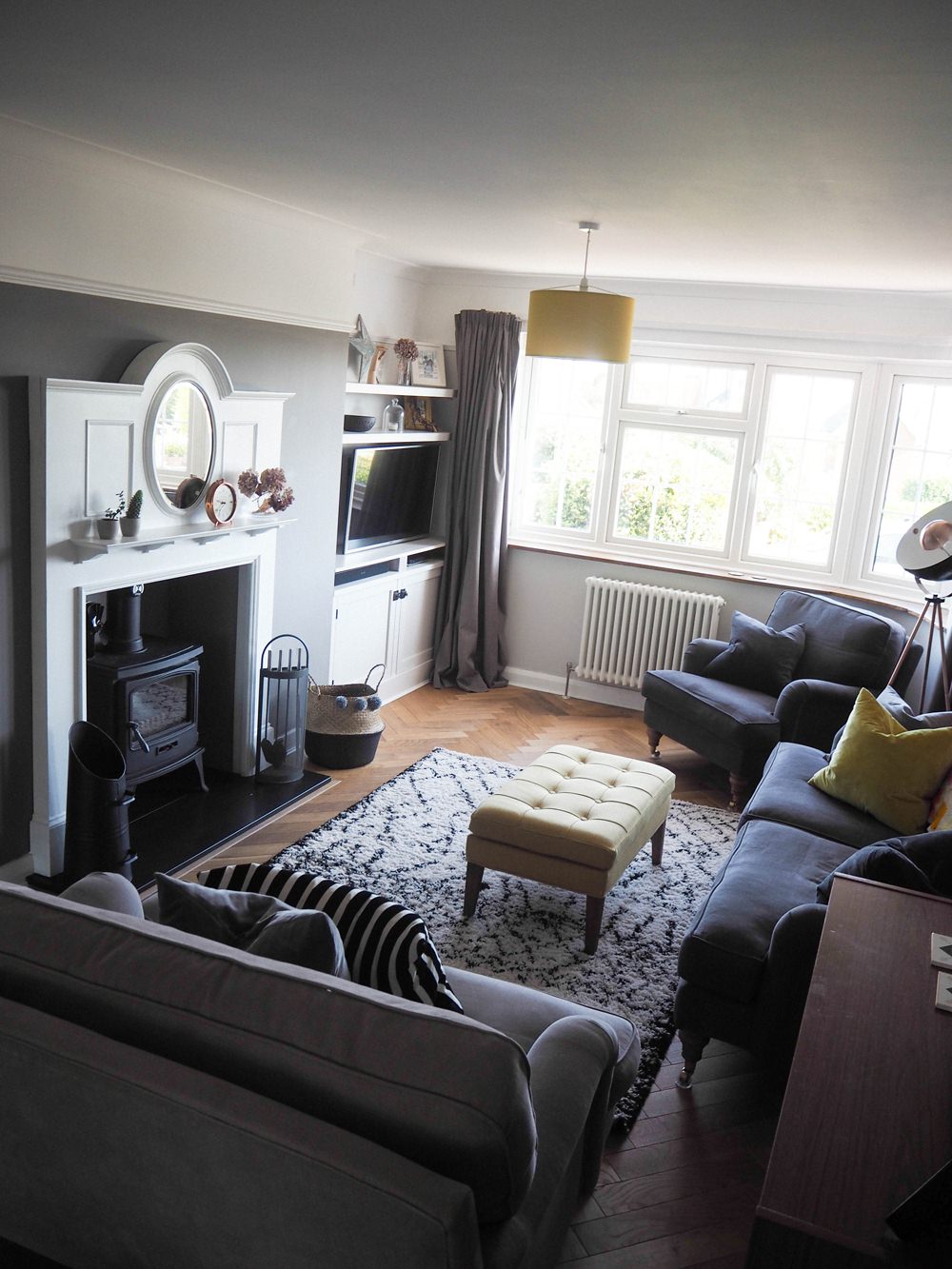Table Of Content
- Fox Fall 2020 Schedule: ‘Filthy Rich’ & ‘neXt’ Premieres, ‘Masked Singer’ & More
- How To Watch The White House Correspondents' Dinner With POTUS & Colin Jost On TV & Livestream
- Saturday, April 27
- Fox at TCA: Emmys to Go Host-less, ‘Animation Domination’ Guest Voices Galore
- Fox Winter 2024 Schedule: ‘Alert: Missing Persons Unit,’ ‘The Cleaning Lady’ & More Premiere Dates
This charming two-story home is the residence of the Griffins -- Lois, Peter, Stewie, Meg, Chris and Brian. The first floor features a sparsely furnished living room, kitchen, equipped with several of Stewie's instruments of world domination, a dining room where Mr. Weed passed away, and the den, where Lois teaches piano. And while the home is quite normal looking -- the family living in it is far from it. In "Blind Ambition",[6] Peter falls off its roof and kills Joan Cusack. Also, in that same episode, the bar burns to the ground when God tries to impress a woman by lighting her cigarette with a thunderbolt.
Fox Fall 2020 Schedule: ‘Filthy Rich’ & ‘neXt’ Premieres, ‘Masked Singer’ & More
Created by Seth MacFarlane, this animated series has become a cornerstone of American humor, known for its irreverent jokes, offbeat characters, and biting satire. Since its debut, Family Guy has captivated audiences with its unique blend of humor and heart, becoming one of the longest-running and most beloved animated shows in television history. The episode was written by Spencer Porter and directed by Jerry Langford.

How To Watch The White House Correspondents' Dinner With POTUS & Colin Jost On TV & Livestream
10 Best 'Family Guy' Parody Episodes - Collider
10 Best 'Family Guy' Parody Episodes.
Posted: Tue, 06 Dec 2022 08:00:00 GMT [source]
Payne loved basketball, especially the Seton Hall University Pirates, said Sires. He also was committed to issues important to his district, including housing, health care and transportation. Sires said they both worked to secure funding to replace the Portal North Bridge, which carries Amtrak’s Northeast Corridor and NJ Transit commuter trains over the Hackensack River east of Newark. Payne, a Democrat, represented New Jersey’s 10th District since he won a 2012 special election to succeed his late father, who had been New Jersey’s first Black member of Congress.
Saturday, April 27
The producers, however, do not take kindly to Brian's desire to start over, so Brian quits in frustration. He is disappointed that he no longer has his own television show, but Lois convinces him that it is his integrity that matters. Peter interrupts, with his own show appearing on the screen, entitled Bigger Jaws. Family Guy is an American animated sitcom created by Seth MacFarlane for the Fox Broadcasting Company. The series premiered on January 31, 1999, following Super Bowl XXXIII, with the rest of the first season airing from April 11, 1999. The show centers around the Griffins, a dysfunctional family consisting of parents Peter and Lois, their children, Meg, Chris, and Stewie, and their anthropomorphic pet dog, Brian.
(Yes, it has really been that long.) The long-running animated series, which just concluded its 22nd season, debuted in 1999. With the help of subversive humor from creator Seth MacFarlane, the series about a Rhode Island family and their talking dog continues to feature big musical numbers, whip-smart satire, and downright hilarious jokes. Liz Meriwether and Kim Rosenstock are writers, executive producers, and showrunners on “Dying for Sex.” Williams will produce in addition to starring. Katherine Pope, Nikki Boyer, and Leslye Headland will also executive produce along with Jen Sargent, Marshall Lewy, Aaron Hart and Hernan Lopez of Wondery Inc. 20th Television is the studio. The name "Quahog", however, appears to be based on the unrelated toponym Quonochontaug, though both are from the Narragansett language.
Fox at TCA: Emmys to Go Host-less, ‘Animation Domination’ Guest Voices Galore
Yet, as MacFarlane ponders the possibility of concluding the series, fans are left to speculate about what the future holds for the Griffin family and their zany adventures. MacFarlane’s contemplation underscores the delicate balance between creative fulfillment and audience reception. While Family Guy continues to resonate with viewers, there remains a lingering uncertainty about its future trajectory. As television landscapes evolve and audience tastes shift, the question of when to bid farewell to beloved characters becomes increasingly complex. Family Guy's main voice cast, which consists of MacFarlane, Seth Green, Mila Kunis, and Alex Borstein, recently sat down with Esquire to reminisce about a quarter of a century of TV greatness. "When I started in the business, I thought that if I could create something that people either fall asleep to or get high to, then I would really feel like a writer," MacFarlane says.
Fox Winter 2024 Schedule: ‘Alert: Missing Persons Unit,’ ‘The Cleaning Lady’ & More Premiere Dates
Family Guy: 10 Hidden Details You Missed About The Griffin Home - Screen Rant
Family Guy: 10 Hidden Details You Missed About The Griffin Home.
Posted: Tue, 11 May 2021 07:00:00 GMT [source]
As fans have wondered when the show might be permanently ending, MacFarlane addressed those concerns and confirmed what we all wanted to hear about the end of Family Guy. He works as the Chief of Diagnostic Medicine at the fictional Princeton-Plainsboro Teaching Hospital, and there is the leader of a team of diagnosticians. Kunis also fondly (or not so fondly!) recalls every time MacFarlane made her sing...
The guys try to start a podcast, but Peter goes solo; Brian is forced to move into Stewie's bedroom. Peter is lost in a mall overnight after his family abandons him; Brian pretends to be rich. When Lois gets a job at an adults-only phone line to earn extra money, she takes a call from Peter.
Fox Renews ‘The Simpsons,’ ‘Family Guy’ & ‘Bob’s Burgers’ for 2 Seasons
Also shown is the basement floorplan which contains the washer, dryer and a bar that Peter built. Though you may find this home quite normal looking -- the family living in it is far from it. The family was conceived by MacFarlane after he developed two animated films, The Life of Larry and Larry & Steve.
And in multiple episodes including "Peter, Peter, Caviar Eater" and "A Fish out of Water", Peter sells or temporarily looses control of the deed to the house. In "Herpe, the Love Sore", Lois warns Peter that they are renting the house. In "Throw It Away", Peter gives a long-winded narration of how Carter and Barbara Pewterschmidt pay for the house, but he mails in the mortgage coupon with a fake check.
In the season seven episode "Peter's Progress",[4] Cleveland's Jamaican cousin Madame Claude reads Peter's palm and discovers that he was related to Griffin Peterson, the supposed founder of Quahog where the previously mentioned history of Quahog was a myth.
Despite their best efforts of them to claim back the bar, the Brits had convinced them to leave. The Clam was rebuilt by Horace, Peter and the gang and began running again. The episode reveals that Peter has been going to the Clam since at least 1977. The Drunken Clam is also known as the location in which any of the group's schemes and adventures are hatched or take place.
It received mixed reviews from critics for its storyline and many cultural references. According to Nielsen ratings, it was viewed in 7.27 million homes in its original airing. The episode featured guest performances by Jennifer Birmingham, Rob Lotterstein, Danielle Panabaker, Charlie Sheen, Elijah Wood and James Woods, along with several recurring guest voice actors for the series.
God and Jesus escape by driving away in their Cadillac Escalade, but a blind Peter, without realizing it, rescues Horace from the inferno and becomes a local hero. The Drunken Clam becomes a Karaoke Bar in "Don't Make Me Over", as the gang helps Horace to put the bar back on its feet against the competition from a new shopping mall. Other renovation attempts, including the original theme to the film Coyote Ugly, had previously failed. The Griffin Home on 31 Spooner Street in Quahog, Rhode Island is the home of Griffin Family. For many years, the home appeared on no maps of the street or city, and was briefly the only complete house in the nation of Petoria, where it was also the executive office, as seen in "E. Peterbus Unum".
Family Guy premiered in January 1999 on Fox and was canceled after two seasons. A last-minute pickup at the network gave the show a third season before it was axed for good. Reruns on Cartoon Network and DVD availability gave the show new life, making it a cult show among fans.






